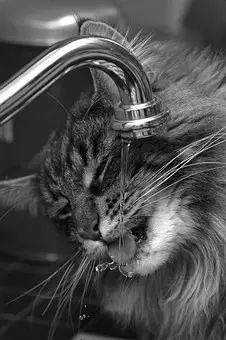Diverticulitis is a common gastrointestinal (GI) reason for hospitalization, especially in developed nations (1). In the United States alone, diverticulitis and its precursor diverticulosis account for 321,000 inpatient admissions annually with 1.5 million days of inpatient care in total (2).The prevalence of this medical condition is increasing, but, by adopting a healthy lifestyle, it is absolutely preventable (1). This article will focus on what we can do in our daily lives for prevention and progression-management purposes.
What is diverticulitis?
The colon is a delicate structure. If it becomes weak, or if we exert too much pressure on it with issues like constipation or straining too much while moving our bowels, small sac-like pouches called diverticula can develop on the colon’s mucosal layer (1,3). This condition is known as diverticulosis. It usually causes no pain or symptoms until the diverticula become inflamed. It’s at this point that the condition evolves into diverticulitis (inflammation of the diverticula) (3). Diverticulitis can cause abdominal pain, bloating, diarrhea, constipation, nausea, or vomiting.
Who is most likely to get it?
As is the case with most diseases, some people have a higher risk of getting diverticulitis than others. Those in the high-risk group include:
• People over the age of 40;
• People who are overweight or viscerally obese (store excess fat in their abdomens around their organs);
• People with poor lifestyle and dietary habits;
• People with a genetic predisposition to the disease.
Some literature also points to medication use, chronic inflammation, and colonic flora imbalance as minor causes of the disease (1, 2, 4). If any of the above conditions describes you, then it’s a good idea for you to be extra-vigilant about reducing your risk of the disease.
How can I reduce my risk?
By having a healthy lifestyle. It might seem obvious, but those with poor diets, a high BMI, and unhealthy habits are simply more likely to suffer from diverticulosis. To keep your colon wall strong and your bowel movements from causing too much strain, we recommend the following lifestyle changes – especially if you’re over the age of 40 and/or have a genetic predisposition to the disease:
1) Maintain a high-fiber diet: Consume no less than 25 g of fiber daily – both the soluble (e.g. whole grains) and insoluble (e.g. fruits and vegetables) kinds (2). Fiber helps combat constipation, and having strain-free poops means having a healthier colon.
2) Hydrate properly: Drink at least eight cups (where each cup is 250 ml) of water (unsweetened tea or other beverages are also fine) daily (2)T. This will increase the volume of your stools, which, again, makes your bowel movements easier and your colon happier.
3) Quit smoking: Research has shown that smoking could elevate your risk of diverticulosis and diverticulitis, making it one of the many reasons why you should consider quitting smoking if possible.
4) Be physically active: Exercising stimulates bowel movements and therefore alleviates constipation. International guidelines recommend at least 30 minutes of moderate physical activities for a minimum of five days a week (2).
5) Up your intake of probiotics and prebiotics: To aid your digestion further, consider adding foods that are rich in probiotics and prebiotics, or take supplements if your diet is limited (2).
6) Limit your toilet time: Throw away your bathroom magazines and ditch the potty-time phone games. If you can concentrate on the task at hand while sitting on the toilet, the process will be quicker and more efficient. Do not push too hard if there is no urge for a bowel movement. If you haven’t had a bowel movement for three days, it may be appropriate to seek medication.
7) Get tested: Whether you’re at a high risk of developing diverticulitis or not, we suggest that you get GI checkups done regularly (every 10 years for low-risk groups and every 1-5 years for high-risk groups).
8) Think small: If you have already developed diverticulosis and don’t want it to evolve into diverticulitis, restrict your intake of small food particles such as nuts, seeds, corn, and popcorn, as these may get stuck in the diverticula and induce diverticulitis (2).
Author
References:
(1) Mayo Clinic Staff. Patient Care& Health information: Diverticulitis. Mayo Clinic. Retrieved from https://www.mayoclinic.org/diseases-conditions/diverticulitis/symptoms-causes/syc-20371758
(2) Matrana MR, Margolin DA. Epidemiology and Pathophysiology of Diverticular Disease. Clinics in Colon and Rectal Surgery. 2009;22(3):141-146. doi:10.1055/s-0029-1236157.
(3) Gastrointestinal Disease: Diverticular conditions. Nutrition Care Manual. American Dietetic Association (AD). Retrieved from https://www.nutritioncaremanual.org
(4) Nagata N., Sakamoto K., Niikura R., Simbo T., Shinozaki M., etc. Visceral abdominal obesity measured by computed tomography is associated with increased risk of colonic diverticulosis. J Clin Gastroenterol. 2015 Nov-Dec;49(10):816-22. doi: 10.1097/MCG.0000000000000267.
(5) Kpoylov U., Ben-Horin S., Lahat A., Segev S., Avidan B., Carter D. Obesity, metabolic syndrome and the risk of development of colonic diverticulosis. Digestion. 2012;86(3):201-5. doi: 10.1159/000339881. Epub 2012 Aug 17.
(6) Janssen I., Heymsfield S.B., Allison D.B., Kolter D. P., Ross R. Body mass index and waist circumference independently contribute to the prediction of non-abdominal, abdominal subcutaneous, and visceral fat. The American Journal of Clinical Nutrition, Volume 75, Issue 4, 1 April 2002, Pages 683–688, https://doi.org/10.1093/ajcn/75.4.683




